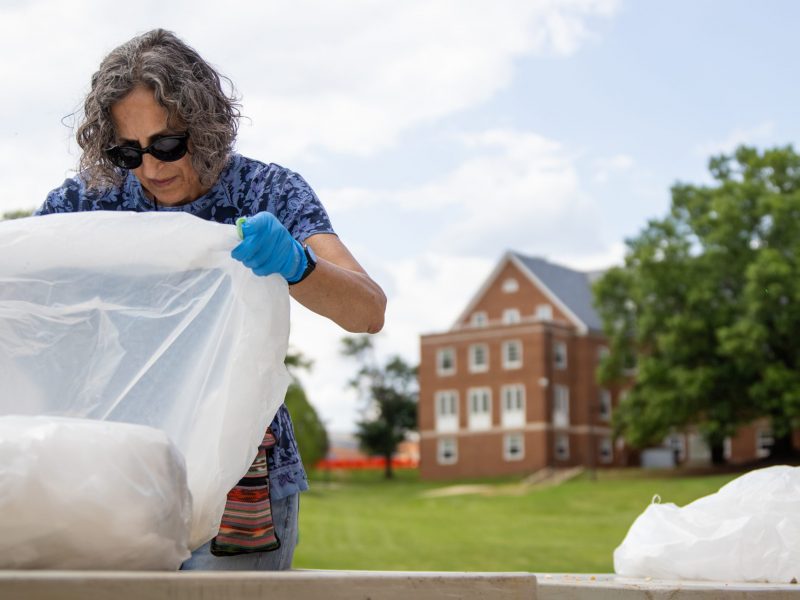While walking around the campus late at night, Matthew Popkin said he noticed the lights were left on and TVs were flashing in many classrooms.
“It just seemed like a waste of energy,” said Popkin, a junior government and politics major and undergraduate representative on the University Sustainability Council. “Not only was it a waste of energy, but it presented the appearance of unsustainability.”
In the past two weeks, Facilities Management workers have made progress on a student-suggested project that started in July — to turn off lights in classrooms when they aren’t in use, according to Susan Corry, project administrator and conservation manager for Facilities Management.
Nearly all of the campus’ 300 general-purpose classrooms have been wired with occupancy sensors, which will turn off lights 30 minutes after there is no motion in the room, Corry said.
The project will reduce energy consumption by 30 percent and save the university $100,000 annually, according to its sustainability website.
Popkin, the SGA senior vice president, and two other students pitched the idea to then-university President Dan Mote’s cabinet in April 2010. Last May, they presented the idea to university President Wallace Loh, which Popkin said he believes was “definitely a push” for the sensors’ installation, as was the 16-member Sustainability Council’s endorsement of the proposal.
“It was a seal of approval from the Sustainability Council to encourage Dr. Loh to encourage the rest of the university to put money into [the project],” Popkin said.
Installing the occupancy sensors and light fixtures cost $200,000 and was funded by the Maryland Energy Administration State Agency Loan Program and PEPCO rebates. The university will continue to apply for additional grants and rebates to extend the project to more classrooms, a project planned for the next two summers, according to the sustainability website.
“It’s just an excellent project all around,” said Jack Baker, Facilities Management’s director of operations and maintenance. “The whole intent is to certainly save the university money and to be sustainable, which is one of the huge objectives of the campus.”
Many students, such as Chris Masino, a sophomore biology and education major, said the project was a smart decision.
“They will save money and make it a greener campus,” he said.
However, Popkin said there may be one small — yet humorous — downside to going green: The sensor can automatically turn off if there hasn’t been much motion in a classroom, even if it’s occupied.
“If that’s the only impact then I think it’s a surefire success,” he said.
gray@umdbk.com


